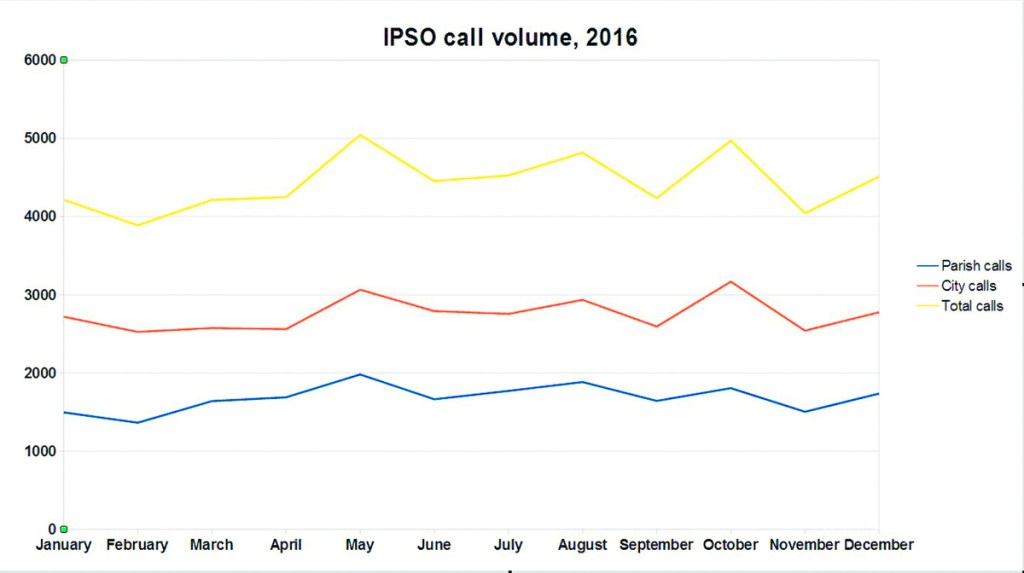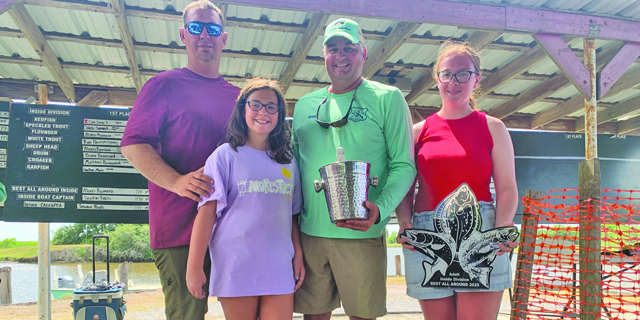Counting the IPSO calls
Published 6:00 am Sunday, April 16, 2017

- Counting the IPSO calls
Good Friday was a busy day on New Iberia’s West End.
Along Mississippi and Shot streets, families gathered for their Good Friday seafood boils. Music blared from jamboxes and truck cabs, the beats blending into a mash of styles as zydeco bass thumbs competed with rhythm and blues slow jams down the block.
Trending
Aside from the phone hawker offering free cell phones and the insurance salesman looking to sign people up for a Medicaid expansion program, the people on the street were relaxing, enjoying the day.
“It’s been peaceful,” said one resident, who would only identify himself as Travis. “Everything’s quiet.”
Less than two months ago, Travis’ porch was part of a crime scene, framed in yellow tape and dotted with evidence markers, showing where forensic technicians had recovered shell casings from an afternoon shooting that sent a Houston man to the hospital with multiple gunshot wounds.
An Iberia Parish Sheriff’s Office squad car passed, slowly making its way through the neighborhood. In an area where gunfire is common and a heavy law enforcement presence a fact of life, none of the residents gave it a second glance.
Six blocks away, at the Hopkins One Stop Convenience store, a bustle of traffic moved in and out of the parking lot. People walked up to the store, exchanging greetings and laughing over jokes as others peered at the screens of their phones or talked to people via headsets, their virtual conversation isolating them as they finished up errands before the Easter weekend.
Despite the calm, only Monday the area across the street from the store was the scene of a midday shooting that left a man injured, shot in the leg.
Trending
An IPSO deputy cruised by in a marked Chevy Tahoe, scanning the area before turning left to continue his rounds.
“They are always patrolling out here,” said Marie Norris, who lives a block away on Corinne Street. “But they never stop. Unless someone gets shot, they just drive on by, keep on moving.”
Part of the reason for that, according to Iberia Parish Sheriff Louis Ackal, is the volume of calls his office receives from the city. In 2016, the IPSO handled a total of 53,163 calls, more than 60 percent of those — 32,996 — from within the city limits of New Iberia.
Capt. Wendell Raborn, public information officer for the IPSO, said he thinks that number may be low.
”Those numbers actually skewed,” Raborn said. “If the exact address is not known, or if there is a question about whether it is in the city or not, it is counted as a parish call.”
Raborn said he took a sampling for one day in March and researched each of the 146 calls received during that 24-hour period. What he found was even more lopsided.
“We went back and plotted one day,” Raborn said. “We researched each of the 146 calls on a map. What we found is that 73 percent of those calls came from within the city.”
Ground zero
Much of the gun violence in the area has occurred within spitting distance of the intersection of South Hopkins and Lombard streets. Raborn said the intersection is a central location for known gangs in the area.
“You have the Hill Gang, the guys on Anderson Street, the one over on Mississippi Street, then Ann Street,” Raborn said. “This is a common area, along the border of their territories.”
The violence speaks for itself.
On April 10, a 31-year-old man was shot in the leg at the intersection. A 17-year-old New Iberia man, Reginald Peters Jr., turned himself in Wednesday in the shooting.
On March 9, a 19-year-old New Iberia man was shot multiple times near the intersection.
On Oct. 27, 24-year-old Aaron Francisco was killed two blocks to the northeast, on Field Street.
On July 1, Donald “Stoney” Boatman, 26, of New Iberia, was shot to death on Anderson Street, to the northwest. Iberia Parish Sheriff Louis Ackal said Boatman was involved in a rolling shootout between members of rival gangs at midday June 14 which ran for more than a mile — then doubled back — on Pershing Street, one of the city’s main thoroughfares that intersects Hopkins a quarter mile north of Lombard.
Because it is at the intersection, the One Stop has become a target for politicians frustrated with the violence. District 5 City Councilwoman Sherry Guidry has called for constituents to flood the state Alcohol and Tobacco Control complaint lines with calls asking for the business to be closed. But Amer Al-Shaebi, the son of business owner Abdul Al-Shaebi, said the store is not the problem.
“We have video cameras. We have signs,” he said, pointing to the one of several prominent “No Loitering” signs on the building. “We call the sheriff to have people removed. Sometimes they come, sometimes they don’t.”
Raborn said that depending on call volume there may not be enough officers on the street to handle every loitering call.
“Let’s say you have 12 units on the road,” Raborn said. “If you have five calls in an hour, and you need backup for those deputies responding, that leaves two guys taking up the rest of business. It takes a lot of resources to provide that sort of coverage.”
Difficult solutions
Lay DeRouen, who lives in an apartment complex on West Admiral Doyle Drive, said she can attest to the call activity. In her area, the uptick in law enforcement activity is because of an increase in people moving to the area bringing that culture of violence with them, she said.
“It’s getting worse,” she said. “People are moving in and it is crazy. We only have like 20 units in the complex, and deputies are out there all the time.”
The increase in drug and gun crime is becoming more prevalent, as evidenced Friday night. After a relatively quiet day in the West End, a man ended up in a Lafayette hospital after what Raborn said was a stray bullet smashed through a truck’s passenger-side window, striking the man in the face.
“They were driving north in the 800 block of South Hopkins Street when something hit the window,” Raborn said. “He didn’t even realize he had been shot until he could tell he was bleeding.”
The driver saw an IPSO patrol unit and asked for assistance. The passenger was put in intensive care when Raborn said doctors felt the wound was a life-threatening injury.
“And, guess what?” Raborn asked rhetorically. “Of all the people on the street, when we arrived to investigate not one person saw anything.”
Based on the direction of travel, the shot was probably fired from the opposite side of Hopkins Street from the One Stop, located less than a block away.
Councilwoman Guidry addressed the lack of cooperation with law enforcement after the March 9 shooting. At the time, she said the only way to change the situation on the streets is to get through to the young people who are involved in violence.
“This is a clarion call to all the young people freely relinquishing their own rights instead of exercising their God-given rights,” Guidry said. “If you are not part of the solution, you are part of the problem.”
Raborn said gunfire is a regular occurrence in the West End. Although the number of shooting victims in the area is alarming, the number of shooting incidents in which no people are hit is staggering. Homes throughout the area have visible bullet holes in posts, siding and window framing, attesting to the ongoing violence.
All of these things are happening against the backdrop of a proposed tax to create a police force for the city of New Iberia. Raborn said the resources necessary to make that happen are staggering.
“The former mayor said many times she was paying for 10 deputies,” Raborn said. “That’s not it. You are paying for a service. It’s like going to dinner at a restaurant. You aren’t paying for a meal. You are paying for the cook, you are paying for the hostess, you are paying the waiter, you are paying the dishwasher, right down to guy who takes the trash out.”
Similarly, Raborn said focusing on the number of deputies ignores all the other pieces needed to fight crime.
“It is going to take a lot more than what he (New Iberia Mayor Freddie DeCourt) is envisioning at this time,” Raborn said. “You need administration. You need investigators. You need a narcotics unit. You have to have traffic patrols and other services. We put as many deputies on road as we can, but it is hard to find qualified people They have to be ready for a challenge.”
And, echoing Guidry’s clarion call, unless the community becomes involved and the values of those on the street changes, Raborn said no amount of manpower will make a dent in the crime rate.
“We could saturate the area with 20 patrols, but it would just slow it down for a while,” Raborn said. “These guys have no respect: for each other, for their neighbors, for life. They live by the gun.”





